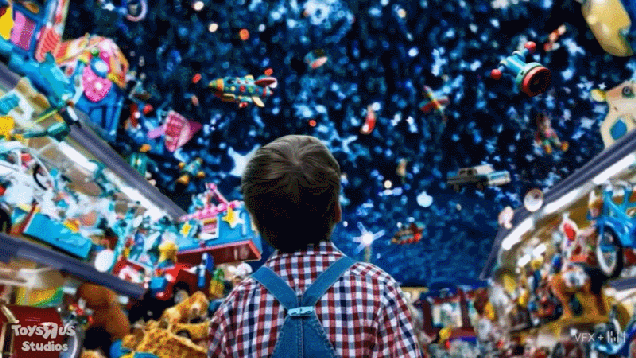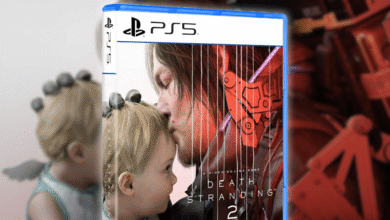Toys ‘R’ Us Spits On Its Own Grave With AI-Generated Trash

Private equity vultures made Toys ‘R’ Us go bankrupt in 2017. All its U.S. stores closed in 2021. But the zombie brand is still around thanks to a licensing deal with Macy’s. Now it’s using generative AI to reanimate its corpse with an origin story ad that puts its 70-year history in a machine learning blender, just so it can repulse anyone who still knows it exists.
Suggested Reading
Kotaku’s Hopes For Spyro The Dragon’s (Reported) Comeback
Suggested Reading
Growing up in the ‘80s and ‘90s meant that Toys ‘R’ Us was synonymous with wall-to-wall shelves of Cabbage Patch Kids, Polly Pockets, Hot Wheels, Nerf Blasters, Super Soakers, Barbies, Trolls, Lego, and video games. It was the one store that had every fun thing you could do on a Saturday morning in one place. The first time I ever touched a Nintendo 64 controller and held it like an idiot was in a Toys ‘R’ Us. Some of its employees would go on to leak upcoming games to the world, and one even got internet famous for doing so. One thing everyone can agree on: it was a place created, run, and shopped at by humans.
So naturally, why not try to boil all of that down into a bungled series of god knows how many machine learning prompts? Billed as the “First Ever Brand Film Created with SORA,” the 66-second spot features an AI-animated depiction of Toys ‘R’ Us founder Charles Lazarus as a young boy in his dad’s bicycle shop. It shows him dreaming of a future filled with toys as a soulless woman’s voice creepily recites a two-sentence Wikipedia-style history of the company’s creation. The iconic Toys ‘R’ Us giraffe bobs along like a knock-off Pixar character wiped out by tranquilizers.
“We are thrilled to partner with Native Foreign to push the boundaries of Sora, a groundbreaking new technology from OpenAI that’s gaining global attention,” reads a description on the company’s website. “Sora can create up to one-minute-long videos featuring realistic scenes and multiple characters, all generated from text instruction. Imagine the excitement of creating a young Charles Lazarus, the founder of Toys ‘R’ Us, and envisioning his dreams for our iconic brand and beloved mascot Geoffrey the Giraffe in the early 1930s.”
The whole thing is cringe, bizarre, and soul-crushing in a bunch of ways. First, there’s the fact that generative AI is theft. Then there’s the idea of trying to evoke “Rosebud” level child-like wonder and nostalgia using an artifact no humans were involved in making. Finally, the ad leans on the founder’s legacy to paper over the fact that Toys ‘R’ Us was put through a financial wood chipper by Bain Capital and others in the 2000s. It now exists primarily as the rent-seeking play thing of the “leading brand acquisition and management firm” WHP Global. The company’s tagline is “activating the power of brand.” Apparently it couldn’t afford any real artists, designers, or writers to help do that in this instance.
I grew up to the dumb beat of inexorable technological progress. Change might be hard, but it was for the best. Toys ‘R’ Us came in and supplanted mom and pop shops. Big box stores came in and supplanted Toys ‘R’ Us. Now the algorithms for Google, Amazon, and TikTok shape what we imagine will fill the hole in our hearts when we click the buy button. It’s easy to to feel like it’s all just another version of the same old bullshit. Part of getting older is realizing that it’s definitely not.
I’m not going to pretend that the world would be a better place if there were a Toys ‘R’ Us in every zip code. But the idea of having a big store stocked entirely with frivolous, colorful chaos sounds naively whimsical in the year 2024. I have small children. I have been to the three disheveled toy aisles at the local Target, one of which is still pink somehow, and they absolutely suck. I have tried to find cool toys on Google and Amazon and it all funnels you to the same SEO-gamed, sponsored-ad junk.
It might seem like this has nothing to do with the AI-generated Toys ‘R’ Us ad, but its the same logic at work: remove the humans, maximize the profits, completely enshittify everything in the process. What you’re supposed to take away from from the ad is an affection for whimsy and a renewed appreciation for humanity’s enduring will to dream. But the real message is that dreams are cheap, and easily replaced by AI. It’s a proof-of-concept exercise leveraging a dead brand’s last drops of nostalgia for a pre-internet age aimed at convincing other companies that they too can cut costs by replacing human input with random slop. I’m sure there is a 21st century Lazarus dreaming of exactly that.
.


